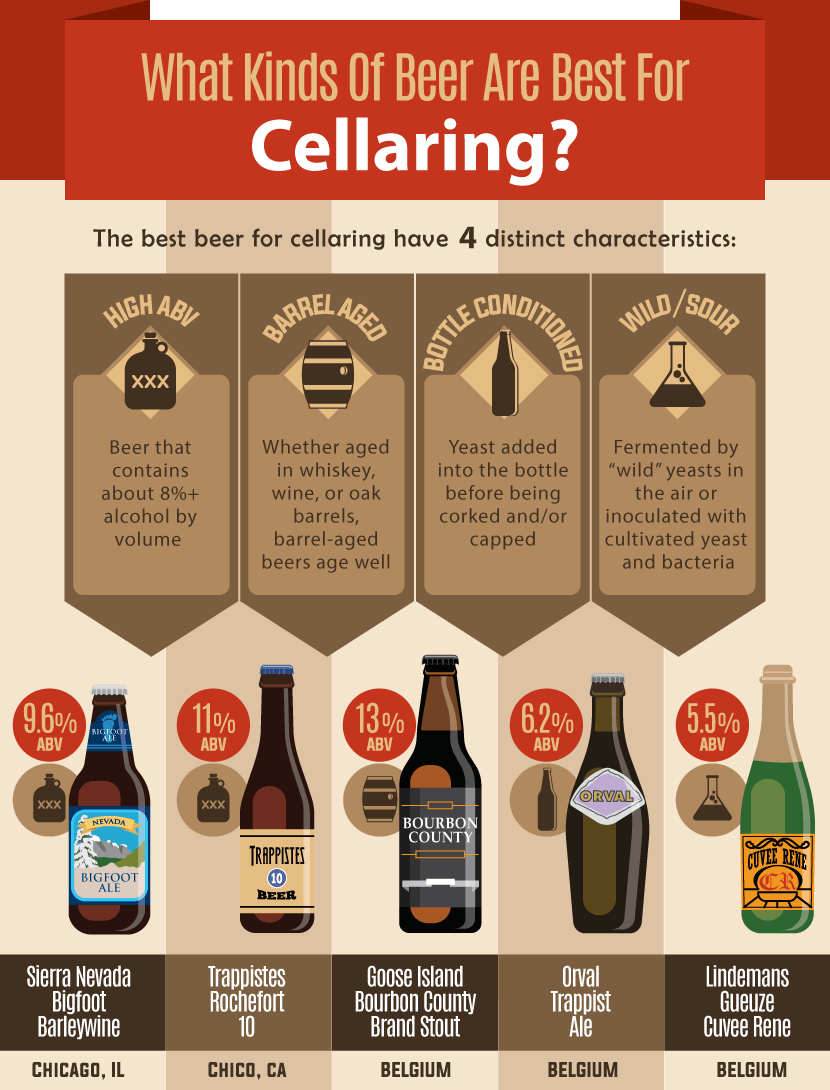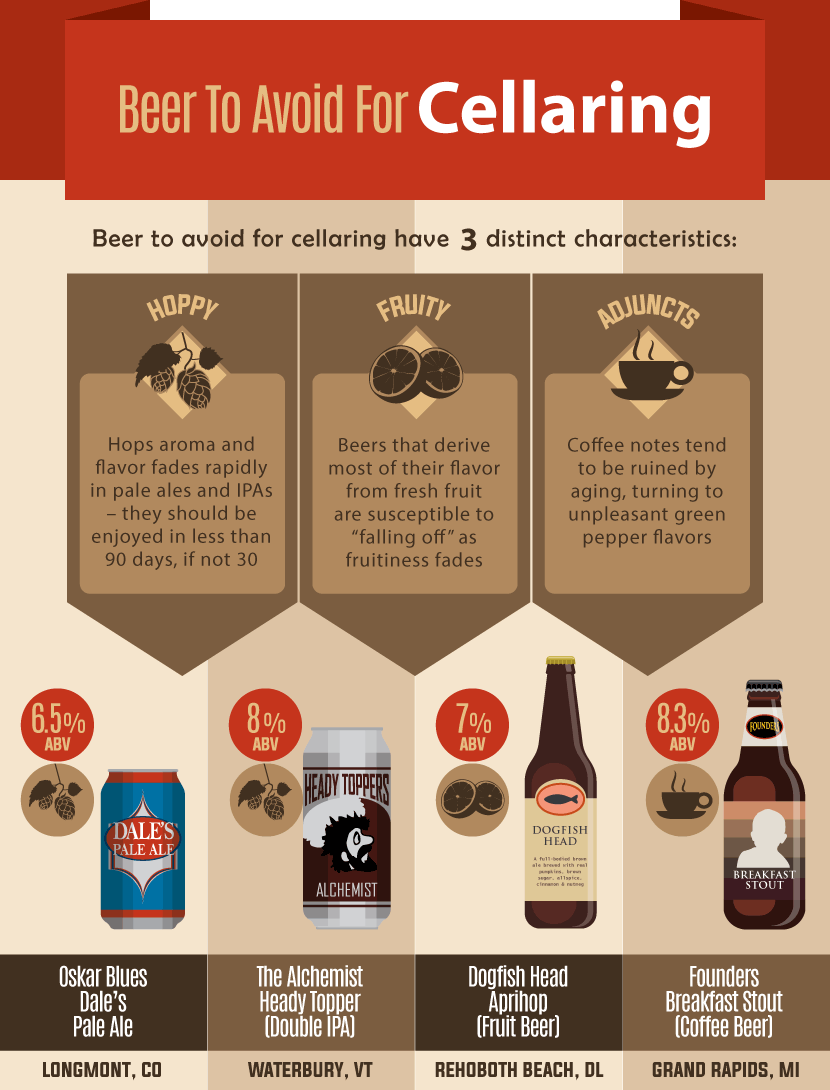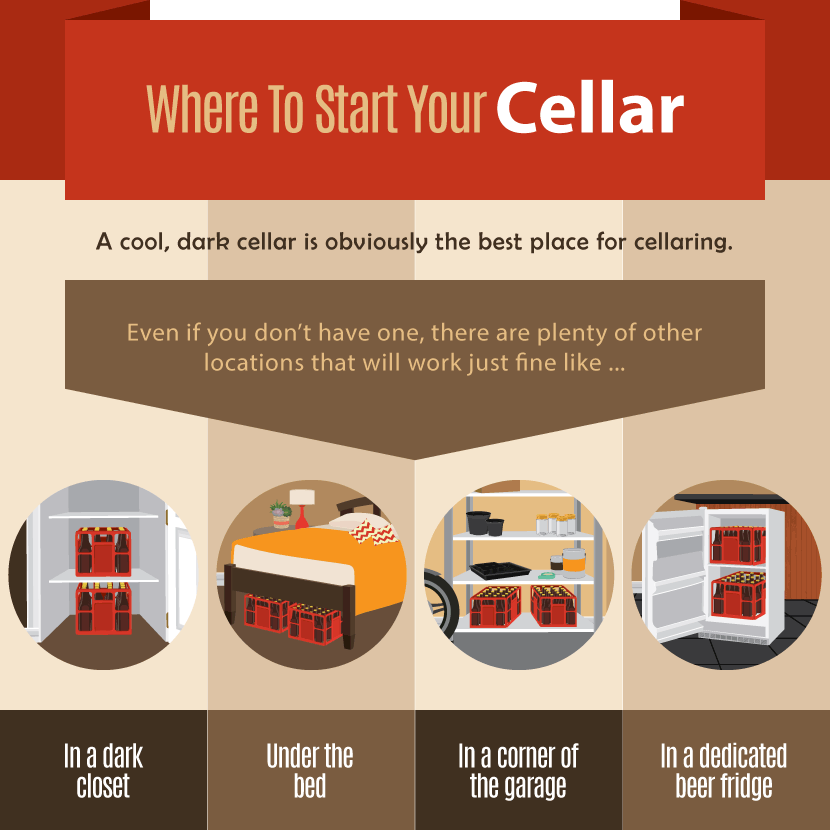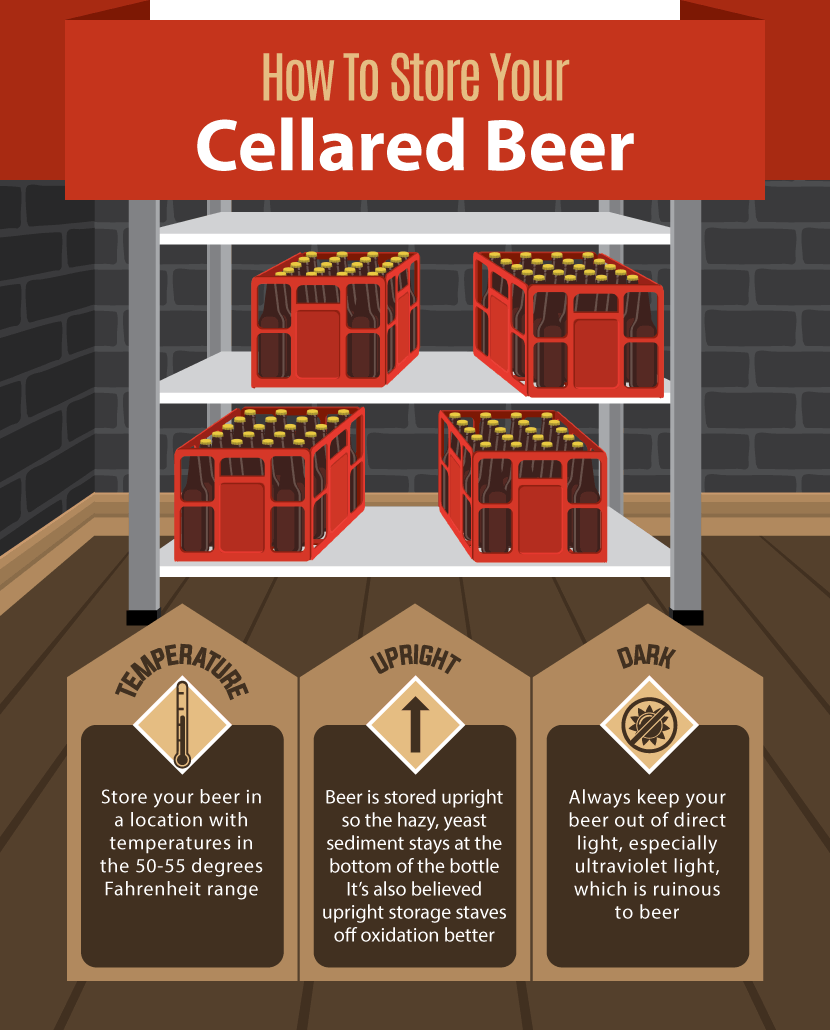How to Start a Beer Cellar at Home
Whether with a wine rack or liquor cabinet, most drinkers like to store bottles of their favorite alcoholic beverages in their house, able to be opened at a moment’s notice.
Yet for some reason, beer has always been neglected as a product worth stockpiling. Thankfully, that’s starting to change.
Today’s beer lovers don’t just pick up a cold six-pack and finish it off before buying another. Many connoisseurs like to collect beer, too, amassing desirable bottles to drink years down the road.
This is also done to watch how flavor profiles of beers change, hopefully improving over time.
But if you want to start “cellaring” – named as such because a cool, dark cellar has long been the best place to store beer – you’ll need to know some key things.
What Happens as Beer Ages
Breweries typically design their beers to be enjoyed fresh. That’s because aging beer causes certain prominent flavors, like hops, to dissipate. In some beers, though, one might want potent flavors to fade while others to rise to the forefront.
An aged beer can also intensify, with never-intended flavors emerging – and not always positive ones – to make the beer more complex.
It’s always best to try a beer fresh before considering aging another bottle of it. (You’ll want a baseline for comparison purposes.)
Still, cellaring beer is an inexact science and is always somewhat about experimentation. As you become more seasoned at cellaring, you’ll learn how to best age particular beers to your liking.
There is always going to be one major thing to worry about when cellaring beer: oxidation. This is when oxygen enters a bottle and interacts with the beer – something that can ruin a beer by producing a cardboard-like “stale” taste.
Oxidation is all but guaranteed the longer beer ages, but certain bolder styles can overcome slight oxidation, even benefiting from it.

Beers Best for Cellaring
Considering the information above, we can guess – it’s always somewhat guesswork – what beers will age well.
High-ABV
No exact number defines “high-ABV,” but once beer reaches 8 to 10 percent alcohol by volume, it often tastes “hot” (boozy) when fresh. High-ABV beers inherently need more malts to reach their alcohol levels.
Aging imperial stouts, for instance, can allow their sweet malts to rise to the forefront and create a more palatable offering.
Some styles, particularly English barley wines and old ales, can also benefit from oxidation, which will add dark fruit, toffee, and liqueur-like notes.
Barrel-aged
Whether aged in whiskey, wine, or simply oak barrels, barrel-aged beers typically age well. These beers are usually high-ABV too, a necessity for standing up to the strong wood and spirituous notes that come from a used barrel.
Bottle-conditioned
Most beers, especially in North America, are filtered and bottled in an already-finished state. Bottle-conditioned beers, however, have yeast added into the bottle before being corked and/or capped.
This creates a living product that will continue carbonating, fermenting, and maturing, leading to flavor profiles that change while cellared.
Wild/sour
Whether spontaneously fermented by “wild” yeasts in the air or inoculated with cultivated yeasts and bacteria, wild ales are great candidates for cellaring. The most common strains of wild yeast and bacteria –
Brettanomyces, Lactobacillus, and Pediococcus – can greatly change flavor profiles over time, rendering these beers drier and more tart, sour, and funky.
Beers Worst for Cellaring
Hoppy
Virtually all beer has hops in it, but when we speak of “hoppy” beers, we mean those styles whose aroma and flavor are most dependant on the Humulus lupulus plant.
Hops aroma and flavor fades rapidly in pale ales and IPAs – they should be enjoyed in less than 90 days, if not 30.
Fruity
Just like hops, fruit is a very volatile ingredient best enjoyed fresh.
Beers that derive most of their flavor profile from fresh fruit (and not artificial fruit flavoring) are susceptible to “falling off” via cellaring as fruitiness fades.
Coffee and Other Adjuncts
While coffee is a prominent ingredient in many high-ABV and barrel-aged stouts, it’s still susceptible to be ruined by aging as enjoyable roasted notes turn into unpleasant green pepper flavors.
Similar adjunct ingredients like vanilla beans, cocoa nibs, and spicy ingredients (chili peppers) are also best enjoyed fresh as aging causes their prominence to fade.

A Note on Verticals
A vertical is a collection of different yearly releases (“vintages”) of one particular beer. It’s fun to taste several vintages in one sitting to watch how a particular beer ages over time and where your preferences lie.
When tasting a vertical with a group, opinions may vary as to when a certain beer “peaked” – reached its ultimate flavor profile from cellaring – and when it began “falling off.”
There is no right answer, but a consensus often emerges.

Where to Cellar
An actual cellar is best for cellaring beer, but the reality is, most people don’t have one and probably can’t afford to build an addition to their house simply to age beers.
Thus, you’ll want to recreate cellar-like conditions as best you can. There’s nothing inherently special about a cellar, it just possesses some key conditions:
Temperate
Store your beer in a location with temperatures in the range of 50-55 degrees F. You don’t need a thermometer monitoring temperature at all times – just make sure your cellar location never undergoes massive temperature fluctuations.
Dark
Always keep your beer out of direct light, especially ultraviolet light, which is ruinous to beer. Just minutes of sunlight can “skunk” beer, destroying hops molecules and causing sulphur-like odors to emerge within the bottle.
Upright
It can be difficult to find the necessary space – and it might seem easier to just repurpose a wine rack – but it’s crucial beer be stored upright. As opposed to wine, which is traditionally “laid down,”
beer is stored upright so the hazy, yeast sediment stays at the bottom of the bottle.
It’s also believed that upright storage staves off oxidation better.
A Note on Beer Fridges
It might seem wise to spring for a committed refrigerator in which you can control the temperature. This is fine if you can always keep the beer at 50 to 55 degrees; otherwise,
most refrigerators are too cold and will prevent beers from actually aging. Likewise, refrigerators are prone to drying out corks.

When to Open Cellared Beers
If the vast majority of beer is designed to be drunk fresh, you might wonder if beer can ever go bad or spoil. Amazingly, that’s virtually impossible – human pathogens literally cannot grow in beer.
Just this year, a 130-year-old bottle of beer was found at the bottom of a Canadian harbor – eventually opened by some adventurous beer fans. Though that beer may not have tasted stellar, it was perfectly safe to consume.
You’ll probably not want to age any beers for 130 years, but you’ll still want to know the best time to open your cellared beers.
It’s mainly a matter of personal preference, but it will usually take at least eight months to a year before you’ll notice any sort of changes within the bottle.
Likewise, few beers have the heft and construction to still be enjoyable after five years.
Don’t be scared – cellaring is not something you really can mess up. At the end of the day, it’s just beer. So cellar it, drink it, and eventually enjoy it!
Embed the article on your site

